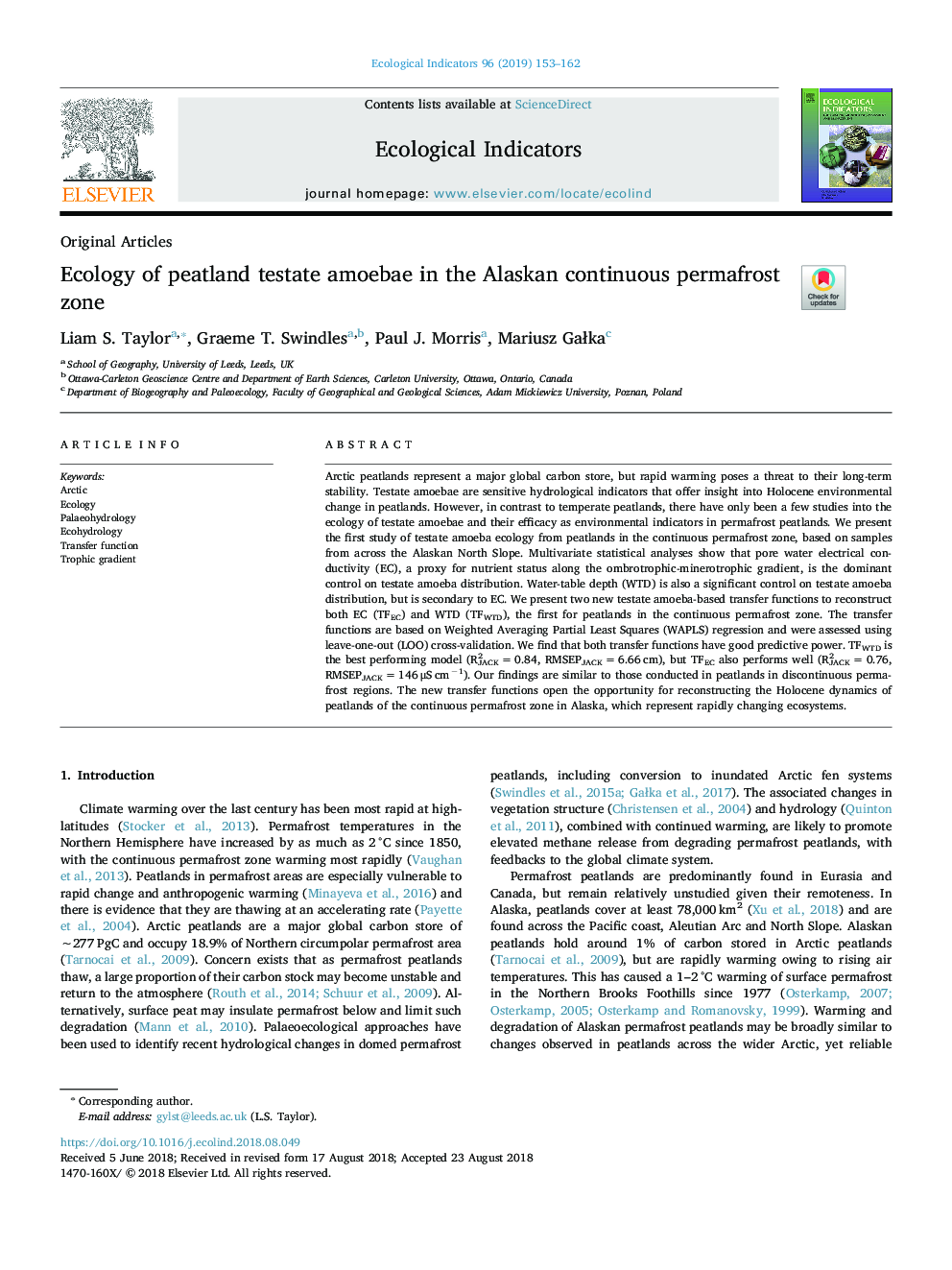| Article ID | Journal | Published Year | Pages | File Type |
|---|---|---|---|---|
| 10144205 | Ecological Indicators | 2019 | 10 Pages |
Abstract
Arctic peatlands represent a major global carbon store, but rapid warming poses a threat to their long-term stability. Testate amoebae are sensitive hydrological indicators that offer insight into Holocene environmental change in peatlands. However, in contrast to temperate peatlands, there have only been a few studies into the ecology of testate amoebae and their efficacy as environmental indicators in permafrost peatlands. We present the first study of testate amoeba ecology from peatlands in the continuous permafrost zone, based on samples from across the Alaskan North Slope. Multivariate statistical analyses show that pore water electrical conductivity (EC), a proxy for nutrient status along the ombrotrophic-minerotrophic gradient, is the dominant control on testate amoeba distribution. Water-table depth (WTD) is also a significant control on testate amoeba distribution, but is secondary to EC. We present two new testate amoeba-based transfer functions to reconstruct both EC (TFEC) and WTD (TFWTD), the first for peatlands in the continuous permafrost zone. The transfer functions are based on Weighted Averaging Partial Least Squares (WAPLS) regression and were assessed using leave-one-out (LOO) cross-validation. We find that both transfer functions have good predictive power. TFWTD is the best performing model (R2JACKâ¯=â¯0.84, RMSEPJACKâ¯=â¯6.66â¯cm), but TFEC also performs well (R2JACKâ¯=â¯0.76, RMSEPJACKâ¯=â¯146â¯Î¼Sâ¯cmâ1). Our findings are similar to those conducted in peatlands in discontinuous permafrost regions. The new transfer functions open the opportunity for reconstructing the Holocene dynamics of peatlands of the continuous permafrost zone in Alaska, which represent rapidly changing ecosystems.
Related Topics
Life Sciences
Agricultural and Biological Sciences
Ecology, Evolution, Behavior and Systematics
Authors
Liam S. Taylor, Graeme T. Swindles, Paul J. Morris, Mariusz GaÅka,
